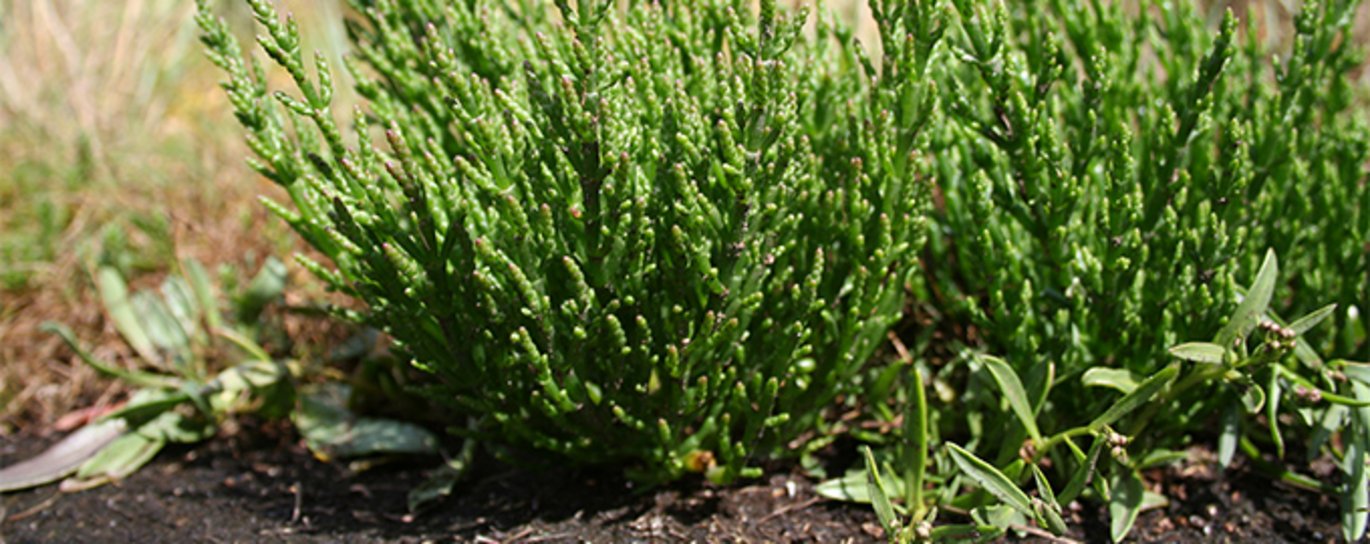Salty soils offers a hidden gem for biomass production
A new project will develop methods for sustainable production of halophytes species in salt-affected areas. The aim is to use the obtained biomass to produce bio-based products, energy and food/feed supplements.

Every year salinity of European lands increases, causing serious economic damage. Since the world population is only growing, urgent interventions are needed to find ways to better use and utilise degraded land.
A new project – HaloSYS – funded within the frame of FACCE SURPLUS aims to develop the cultivation of selected halophytes species in salt-affected soils and explore how to use the obtained biomass in new value chains.
In general, obtaining biomass from land unsuitable for agriculture is an insufficiently tapped research field, says the coordinator of the project, Dr. Maria Paraschiv from the National Institute of Research and Development for Biological Sciences in Romania
- Salt-affected soils need to be considered for a more sustainable land use, and since halophytes species have developed specific adaptation mechanisms enabling them to grow in these soils, they possess great potential. Furthermore, biomass provided by these species has a high content of compounds suitable for various applications, but we need more knowledge on and understanding of how to grow these in a sustainable production on uncultivated lands and how to better use biomass and waste from these plants.
Analyses to identify valuable bioactive compounds
In the project, partners from Romania, Poland and France will focus on a number of different halophyte plant species. These will be grown in experimental plots and in fields in Romania and Poland.Since the ambition is to develop synergistic biorefinery concepts, advanced fractionation and conversion processes will be used – and extracts from the plants will be analysed to identify valuable bioactive compounds. Sugars can for instance be used for bioethanol synthesis, and oil can be transformed into biodiesel. The remaining waste is further transformed into bio-based products (briquets, etc.).
The potential of extracting salts from soil will also be taken into consideration when choosing the halophyte species, as this, in the long-term, offers a possibility to improve agricultural features in the now salt-affected lands.
In the end, the project will evaluate environmental and socio-economic implications relating to halophyte-based biomass production and use.
- The contamination of the environment by excessive salinity of soils may be induced by natural causes and anthropic activities. Such soils have lower or zero suitability for traditional agriculture production, influencing the decline of regional economics. The remediation of these sites or the implementation of new ways to use them are necessary to achieve the restoration of agriculture production and thus economical growh, says Dr. Maria Paraschiv.
Further information
Partners in the 3-year HaloSYS-project include National Institute of Research and Development for Biological Sciences, Romania, University of Agronomic Sciences and Veterinary Medicine of Bucharest, Romania, IMT Atlantique, France, Solutions Déchets & Développement Durable, France, Instytut Włókien Naturalnych i Roślin Zielarskich, Poland and BIOTEN Ltd., Poland.
Contact
Dr. Maria Paraschiv
National Institute of Research and Development for Biological Sciences, Romania
Email: mariaparaschiv@gmail.com
- Visit the project website
